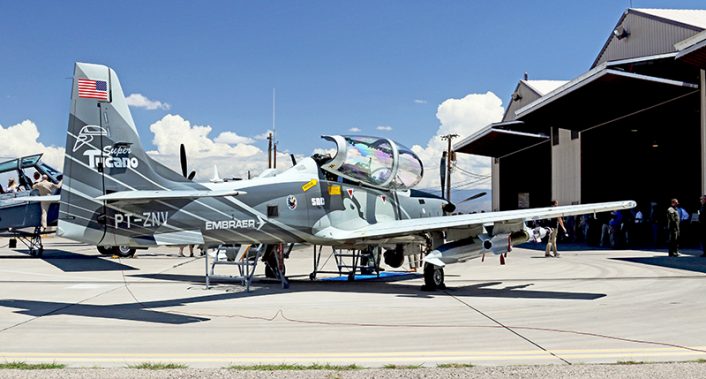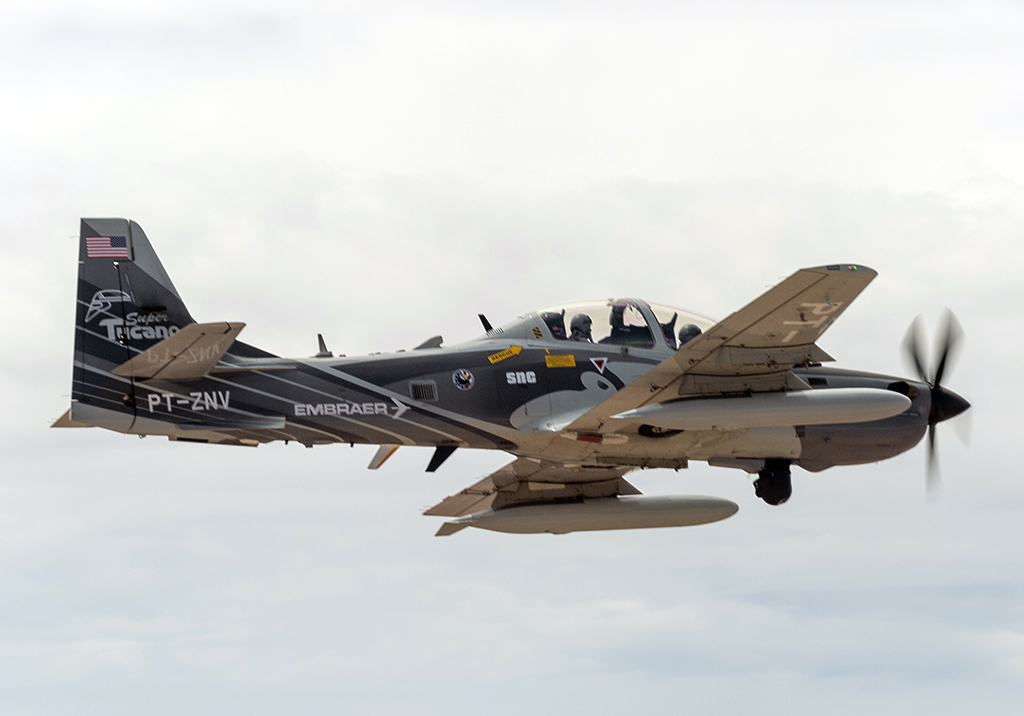Aircraft Was Part of Air Force Light Attack Experiment Program. It’s the seventh U.S. Air Force crash this year.
A U.S. Navy pilot participating in the ongoing Light Attack Experiment died Friday, June 22, 2018 when the Embraer A-29 Super Tucano aircraft he was flying crashed inside the Red Rio Bombing Range inside the White Sands Missile Range.
The U.S. Navy has identified the pilot who died in the accident as Lt. Christopher Carey Short, from Canandaigua, New York. Another crew member on board the two-seat light turboprop attack and trainer aircraft is being reported as injured after ejecting from the aircraft.
No cause for the accident has been reported and the cause of the accident is under investigation according to Air Force Public Affairs at Holloman AFB.
The aircrew involved in Friday’s accident was participating in the ongoing U.S. Air Force Light Attack Experiment, an evaluation program that is performing analysis and flight tests on several small, mostly turboprop light multi-role aircraft for potential integration into U.S. and allied air combat roles.

According to an official Air Force statement released early last month, the second phase of the Light Attack Experiment began at Holloman AFB in New Mexico on May 7, 2018. The statement included remarks by USAF Lt. Gen. Arnie Bunch, military deputy, Office of the Assistant Secretary of the Air Force for Acquisition.
“This second phase of the experimentation is about informing the rapid procurement process as we move closer to investing in light attack. If we can get light attack aircraft operating in permissive combat environments, we can alleviate the demand on our 4th and 5th generation aircraft, so they can be training for the high-end fight they were made for.”
The Embraer A-29 Super Tucano is one of several aircraft that have participated in the Light Attack Experiment. Other aircraft involved in the evaluation experiment include the Textron Aviation Defense AT-6 Wolverine turboprop and the U.S built Textron Aviation Defense Scorpion light jet, the only jet aircraft shown so far in the experiment. The IOMAX Archangel has also participated in some of the Light Attack Experiment.
The USAF’s controlled commercially-owned A-29 was about to demonstrate its capabilities as part of the second phase of the Light Attack Experiment on Jun. 22, when it crashed.
The A-29 Super Tucano is a proven light attack and trainer aircraft with a history of successful operation with a number of international operators including Afghanistan. On March 22, 2018, pilots of the Afghan Air Force successfully employed a GBU-58 Paveway II precision guided bomb against a Taliban target for the first time. The Afghan Air Force currently employs 12 A-29 Super Tucano light attack aircraft with more slated for delivery.
The Columbian Air Force has used the A-29 Super Tucano extensively in combat against the FARC rebels prior to the September 2016 ceasefire.
While the A-29 Super Tucano does have a proven performance and safety record the light attack mission can be inherently dangerous with aircraft frequently prosecuting targets at medium to very low altitude and in a crowded battlespace where communications with air assets and ground troops coordinating close air support is often complex.
The A-29 is the seventh U.S. Air Force crash (12th U.S. military aviation) since the beginning of the year. The most recent ones involved a WC-130H from the 156th Airlift Wing from Puerto Rico ANG that crashed near Chatham City, Georgia on May 2, 2018, causing 9 deaths; a T-38 that crashed 9 miles north of the city of Columbus on May 23, 2018 after the pilots managed to eject; and a USAF F-15C Eagle belonging to the 18th Wing at Kadena AB, Okinawa that crashed into the ocean off Okinawa on Japan on Jun. 11, 2018: the pilot ejected but was seriously injured in the incident.













